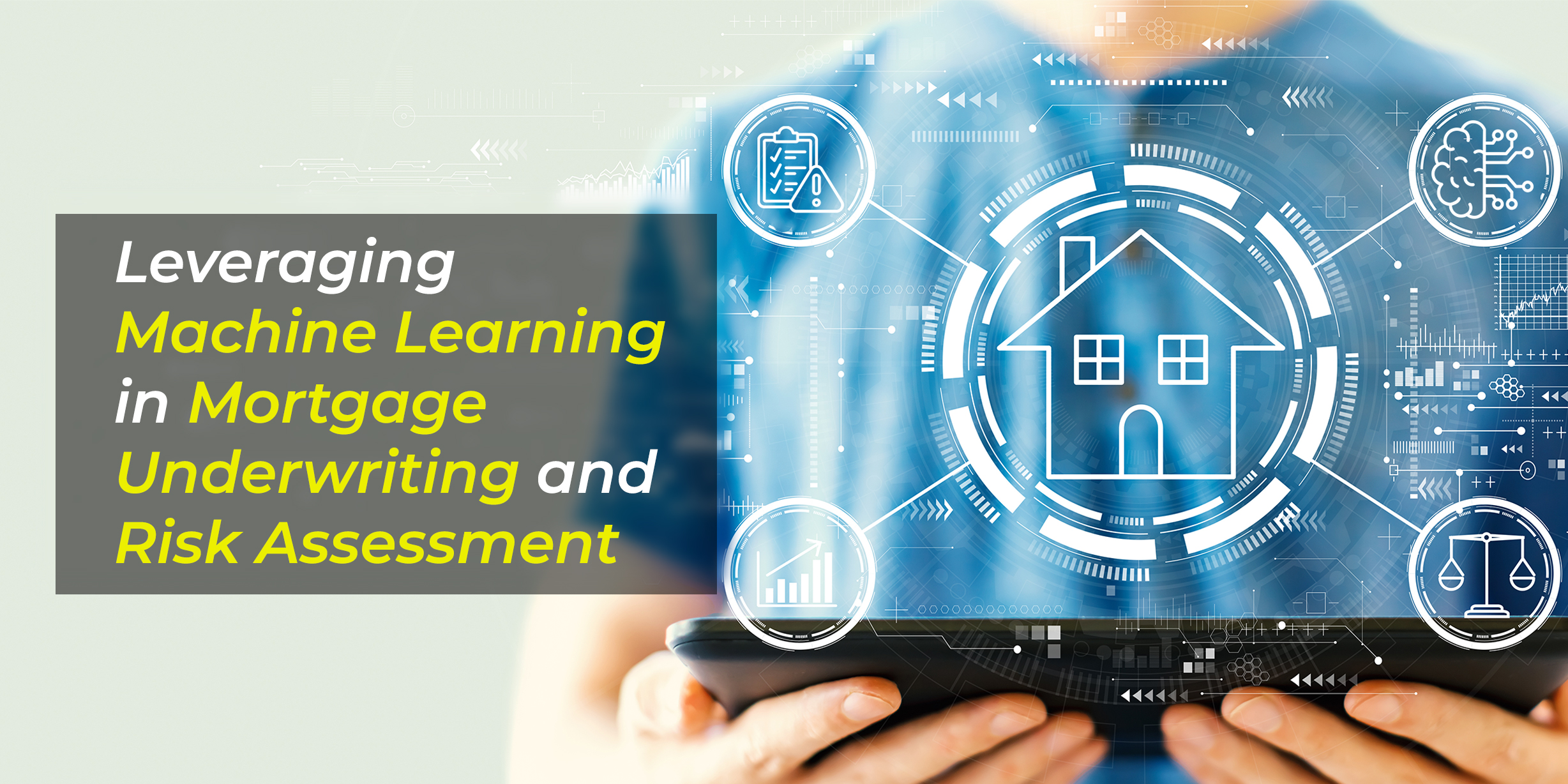Machine learning (ML) is a subset of artificial intelligence (AI) that applies complex mathematical models and large datasets to arrive at accurate predictions for the future. This makes it a good fit for underwriting solutions and risk assessment in mortgage, processes that both rely on a large number of micro and macroeconomic datasets. That is why banking and non-banking lenders are increasingly adopting machine learning models to make more precise and prescient forecasts.
Read more: How to Avoid Mortgage Compliance Issues: An Actionable Guide
How Do Machine Learning Models in Underwriting Work?
Machine learning models operate by training on dummy data to learn how to make financial predictions. In underwriting, it absorbs borrower information and market intelligence to assess the person’s creditworthiness. As a next step, ML might integrate with automation systems like RPA to execute underwriting tasks with little to no human intervention.
In other words, ML streamlines underwriting solutions through the power of accurate decision-making and automated task execution. This has many benefits:
- Machine learning models can absorb significantly more data than is possible manually or through traditional statistical algorithms.
- You can apply ML to even big data sources such as social media chatter.
- Machine learning can work at scale and reduce the time taken for each loan origination. As a result, the underwriter’s productivity increases.
- As new data emerge (for example, data from default servicing), you can feed it into the ML engine. This helps the underwriting process prevent delinquencies and bad loans.
- ML can be integrated with other technology solutions like AI-based document management and RPA bots. This breaks down silos.
The biggest benefit of using machine learning models in underwriting solutions is their ability to process large amounts of data and adapt to variability in datasets. This quality is also useful in risk assessment, a mortgage process that is equally reliant on data but less on automation.
Read more: What’s the Buzz Around AI Trust, Risk, and Security Management (AI TRiSM)?
How Do Machine Learning Models in Risk Assessment Work?
Risk assessment in mortgage can be part of the underwriting process (i.e., calculating the risk of lending to large borrowers, especially commercial entities) as well as part of broader decision-making. For example, lenders can use ML algorithms in a volatile economy to gauge the viability of their products, come up with new ones, or change their servicing approach.
To achieve this, machine learning models take into account borrower-level or micro-data and market-level or macro stressors. Using data such as a person’s credit score, checking account status, employment history, etc., on the one hand, and GDP, unemployment rates, etc., on the other hand, the algorithm is able to figure out a mortgage company’s potential risk exposure. This entire process can be wrapped into an underwriting solution to make less risky lending decisions.
Another way machine learning models can operate in risk assessment is by preventing fraud. ML can process very large datasets stretching back several years or decades to understand what qualifies as a valid and legitimate transaction. Based on this, it forms a risk threshold, and every transaction is assigned a risk score relative to this threshold. As a result, mortgage businesses can mitigate the risk of fraud.
Read more: 7 Factors to Consider When Choosing a Risk Management Platform
ML Applications in Mortgage Underwriting and Risk Assessment
Here are some of the top use cases for mortgage companies using machine learning models:
1. Mortgage stress testing
Stress testing allows financial institutions to evaluate if a borrower can continue to make payments if mortgage rates were to increase beyond current standards. Rising rates can bring in more revenues for lenders and help them adapt to a difficult economy. But it can also cause borrowers to default, which results in greater operational and financial losses. Machine learning models can assimilate massive volumes of macroeconomic data to forecast the risk associated with mortgage rate hikes.
2. Real-time fraud prevention
One of the biggest challenges in mortgage fraud is that it is constantly evolving, and financial institutions can struggle to keep up. Schemes like air loans (where the criminal uses a non-existing property to obtain a loan) and equity skimming (where the criminal makes no mortgage payments and simply rents the property until foreclosure) can be difficult to detect. Machine learning models can reduce your risk exposure by closely scanning all the relevant data to highlight any chances of fraud in real time.
3. Intelligent underwriting process automation
Finally, ML can streamline underwriting solutions, much like AI has automated accounts payable to the point of 100% straight-through processing (STP). At the loan application stage, ML can automate and improve credit risk assessments. Then, it can perform data extraction and indexing to reduce your reliance on paper processes. ML-powered platforms can also automatically disburse loans for very-low-risk borrowers, improving the customer experience.
Read more: The Rise of Generative AI: Transforming the Tech Landscape
Build Your ML Adoption Bedrock with Nexval
Today, mortgage businesses do not have to develop machine learning models and algorithms from scratch or host training data on expensive mainframes. Nexval’s cloud-based AI and ML solutions, combined with our decades of industry expertise, make it easier to adopt ML at scale. Our team of 1000+ SMEs will identify the best use cases for ML in underwriting and risk assessment in your company so you can start generating value from the get go.
Speak with our Tech Experts to learn how.



